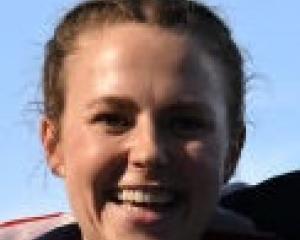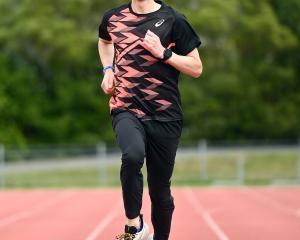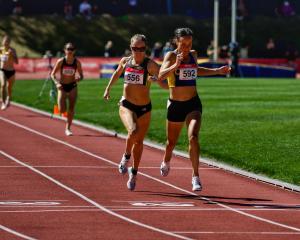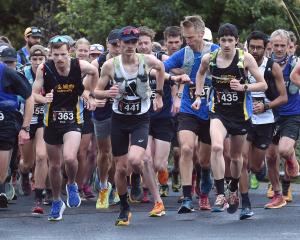Kerse (62) and his partner, Lesley Stevens (58), returned this month after spending four months in Canada and the United States running ultra endurance races.
Kerse, who ran his first 100-mile race in the United States in 1979, completed four of the seven ultra distance races he started.
Stevens ran her first, and only, 100-mile race in the Lean Horse event at South Dakota, in a time of 28hr 35min.
Kerse and Stevens, Dunedin relief teachers, ran this race together.
Kerse finds the early hours of the morning the most difficult part of the race.
"Between 2am and 5am is the hardest. I take coffee tablets to keep me awake."
This is time that Stevens thrives. She kept Kerse going in the Lean Horse and paced him through the night in other races.
"Lesley had a disciplined routine," Kerse said.
"We ran for 20 seconds and then walked for 40 and kept up this pattern through the middle of the night when I was happy just to walk."
Stevens just kept munching on her toasted sandwiches and eating soup during the night which kept her going. Kerse was not able to eat much.
"The hardest part for me was during the day," Stevens said.
"I was dragging the chain in the sticky heat."
It is different for Kerse.
"I always get a new lease of life in the daylight . . . and can get a good pace going again," he said.
"Between 6am and 9am is the pleasant part of the day for me."
Kerse completed three other races: Sulphur Springs, Ontario, Canada (28hr 41min), Stormy, British Columbia (30hr 33min) and Silverton Alpine 100, Colorado (39hr 02 min).
He topped the over 60 age group three times and was in the top 60% at Lean Horse.
It is not unusual for runners to pull out of ultra distance races during the event. Kerse was forced to do so in the Mohichan in Ohio, Tahoe Rim in Nevada and Pine to Palm in Oregon.
Kerse took a 26-year break after running his first 100-mile race in 1979 but has run 13 more in the last five years. He has completed 14 of the 21 races - a high percentage.
The key is to combine running and walking.
"You must keep the body fed and manage blisters," he said. "It is a 90% mental race. You must eat plenty of fat and proteins to replenish the muscles."
Kerse mainly consumes sports gels during the day but in the evenings he likes to tuck into turkey sandwiches, bananas and rock melons.
"I find I'm nibbling and grazing all the time. Towards the end of the race I enjoy Moro bars and five miles from the finish I like a beer.
"My body gets sick of the sweet stuff and the beer gives me a lift and takes the pain away," he said.
It can be a bit eerie during the night, especially running alone through the bush tracks.
"I can only see 2m ahead with my flashlight," he said.
"You can hear the sounds of the bush and it can be daunting when the body is physically depleted."
But the second sunrise brings hope.
"When I see the finish line I actually start sprinting over the last 200m and run at six-minute-mile pace," Kerse said.
"I get a euphoria when I finish."










